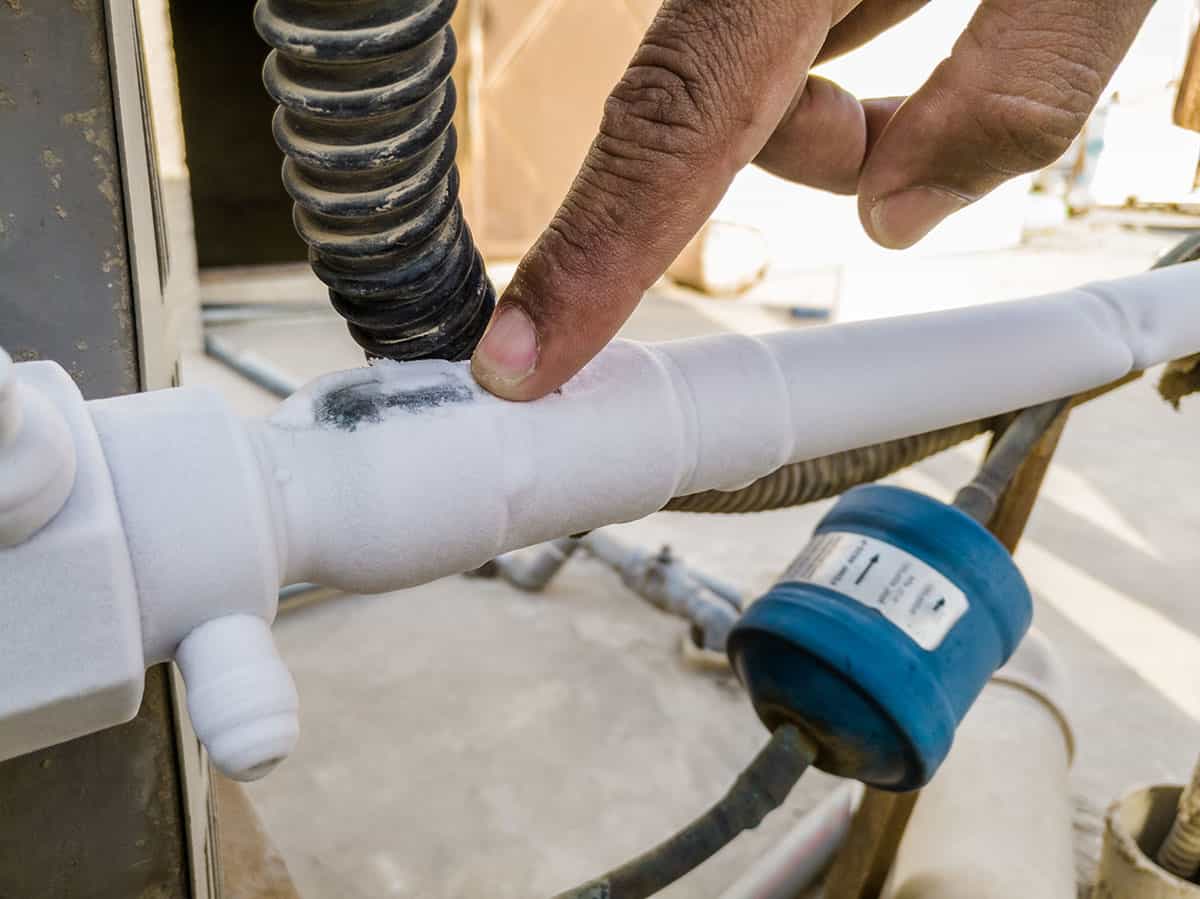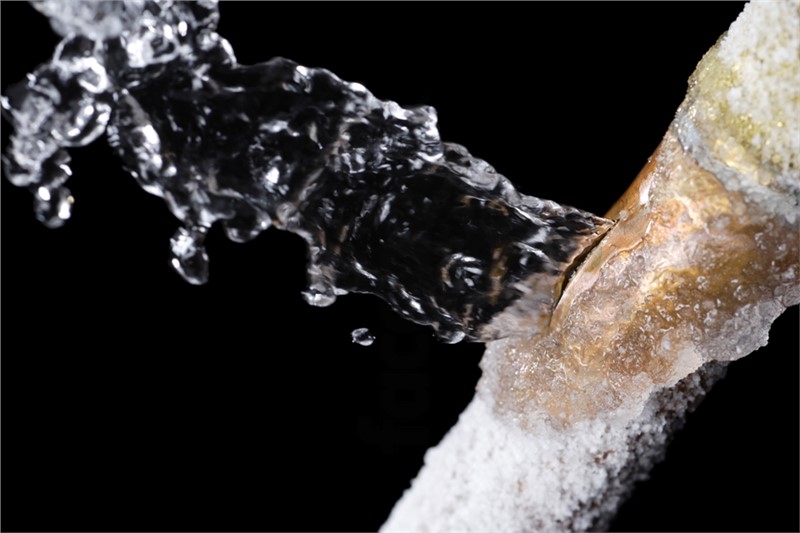Dealing with a Frozen AC Pipe: Effective Strategies
Dealing with a Frozen AC Pipe: Effective Strategies
Blog Article
Everyone maintains his or her own idea with regards to What Causes AC Pipes To Freeze?.

Intro
Uncovering that your AC pipe is iced up can be concerning, especially throughout hot summer months when you depend on your ac unit one of the most. Recognizing what to do in such a circumstance is vital to stop additional damages to your cooling system and guarantee your convenience inside your home.
Comprehending the Causes
A number of aspects can contribute to the cold of an air conditioner pipe. Recognizing these causes can assist you address the issue efficiently.
Lack of Airflow
One typical cause of an icy air conditioning pipe is inadequate airflow. When the air flow over the evaporator coil is restricted, it can create the coil to go down below freezing temperature level, resulting in ice development on the pipeline.
Reduced Refrigerant Levels
Inadequate cooling agent levels in your air conditioner system can also lead to an icy pipeline. Reduced cooling agent levels can cause the pressure in the system to drop, bring about the cold of moisture on the evaporator coil.
Cold Weather Conditions
In cooler climates, freezing temperature levels outside can contribute to the cold of air conditioner pipelines. If your air conditioner device is not correctly protected or if there are leaks in the ductwork, chilly air can infiltrate the system, creating the pipeline to freeze.
Dirty Air Filters
Dirty or clogged air filters can limit airflow in your a/c system, causing different problems, including a frozen pipeline. It's necessary to replace or clean your air filters routinely to make certain appropriate airflow and protect against ice buildup.
Signs of a Frozen Air Conditioning Pipe
Identifying the indicators of a frozen AC pipeline is essential for timely activity.
Reduced Airflow
If you observe a considerable decrease in airflow from your vents, it might suggest an icy pipeline.
Ice Buildup on the Pipe
Noticeable ice build-up on the cooling agent line or the evaporator coil is a clear sign of an icy air conditioning pipe.
Strange Sounds from the Unit
Unusual sounds, such as hissing or bubbling, coming from your air conditioner system can signal that there's ice present on the pipeline.
Immediate Actions to Take
When confronted with an icy AC pipeline, it's vital to act promptly to stop further damages to your cooling system.
Shutting off the air conditioner
The very first step is to turn off your a/c to stop the system from running and intensifying the problem.
Checking for Blockages
Examine the area around the indoor unit for any type of blockages that may be obstructing air movement, such as furniture or drapes.
Thawing the Pipe
You can make use of mild techniques like putting towels taken in warm water around the frozen pipeline to help thaw it gradually.
Safety nets
Taking preventive measures can help stay clear of future incidents of a frozen AC pipeline.
Regular Maintenance Checks
Arrange routine upkeep checks with a professional HVAC professional to guarantee that your AC system is running efficiently.
Altering Air Filters
Regularly change or cleanse your air filters to prevent air flow limitations and keep optimum performance.
Shielding Exposed Pipes
If your air conditioning pipes are subjected to cool temperatures, consider protecting them to avoid cold during winter season.
Looking For Professional Help
If DIY methods stop working to resolve the issue or if you're unclear concerning exactly how to proceed, it's ideal to look for support from a certified HVAC specialist.
When DIY Methods Fail
If your attempts to thaw the pipeline or address various other problems are unsuccessful, it's time to call a professional.
Relevance of Hiring a Professional HVAC Technician
A licensed HVAC specialist has the experience and tools necessary to detect and repair issues with your air conditioner system safely and successfully.
Verdict
Managing an icy air conditioner pipeline can be an irritating experience, yet knowing just how to react can assist minimize damage and recover comfort to your home. By recognizing the causes, identifying the indications, and taking punctual action, you can properly deal with the concern and avoid future incidents.
What to Do If Your AC Line Is Frozen
Make Sure All Supply and Return Air Vents Are Open
If you notice problems with airflow, the first thing you should do is check your supply and return vents. Supply vents distribute clean, conditioned air throughout your home. As this air becomes stale, it’s pulled into the return vent, where it’s reconditioned before being sent back out through the supply vent.
When these vents are closed, air won’t flow in the home. Before examining your AC, check the vents in every room and ensure they’re all open.
Check for a Dirty Air Filter
Another possible cause of limited airflow is a dirty air filter. Your air conditioner’s filters catch elements you don’t want to breathe in, such as dirt and dust. Over time, filters can become clogged, ultimately blocking air from flowing in and out. The lack of airflow can then cause the entire coil to freeze and will completely restrict any air from moving through it. The AC may need to be powered off for one to two days to allow the coil to thaw after replacing the filter to allow proper functioning of the unit. This debris can also accumulate on your AC’s evaporator coil, requiring a more serious repair. In general, air filters should be cleaned regularly (about every two weeks).
Assess Your Outdoor Unit
In addition to checking your AC, assessing the outdoor unit is a good idea. Also known as the condensing unit, it works with your interior unit to release heat outside. An issue with the outdoor unit can result in rising internal temperatures.
Overgrown Shrubs or Clogged Leaves
From leaves and twigs to shrubs and debris, there’s no shortage of outdoor elements that can accumulate around your condensing unit. When these elements get lodged inside the unit, they can block airflow. Fortunately, removing the blockage can solve the problem.
Sounds of a Broken Fan
Shrubs and leaves aren’t the only things that can impede your outdoor unit’s airflow. If the fan is broken, the unit won’t be able to properly get rid of heat — which means the internal temperature won’t go down. First, make sure the fan is spinning. If it is, check for the following sounds of a broken fan:
Buzzing Rattling Screeching Hissing Clicking Preventative Measures
Nobody wants to deal with a frozen AC line. In addition to causing problems with your air conditioner, they require professional repairs. On the bright side, there are preventative measures you can take to help ensure this issue doesn’t arise in the first place.
https://www.coopergreenteam.com/blog/what-to-do-if-ac-line-frozen

Hopefully you enjoyed reading our post on Air Conditioner Frozen? How To Fix your Frozen AC Line. Thanks so much for finding the time to read our piece. Sharing is nice. Helping people is fun. We appreciate reading our article about What Causes AC Pipes To Freeze?.
Book Your Installation Report this page